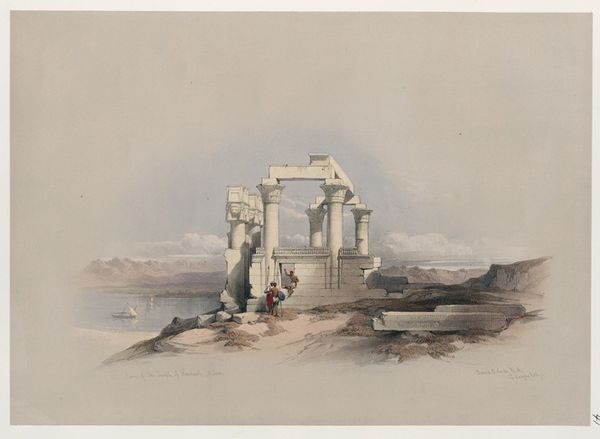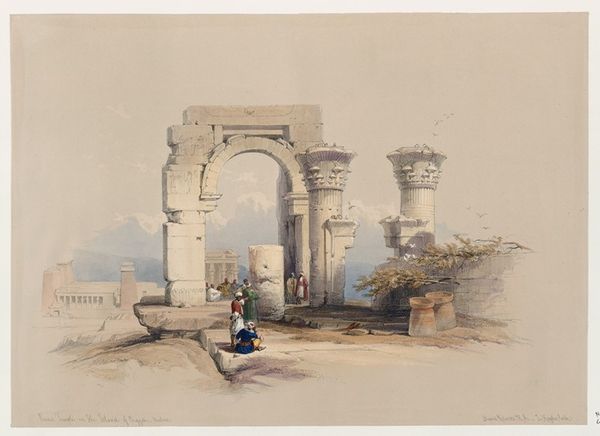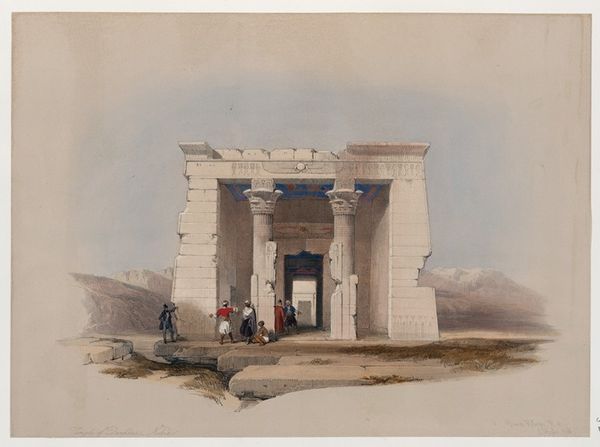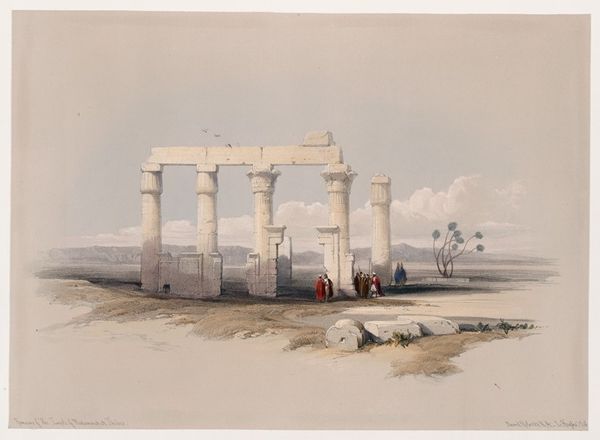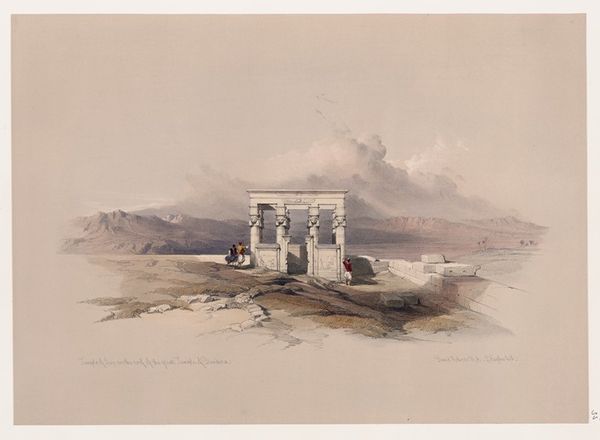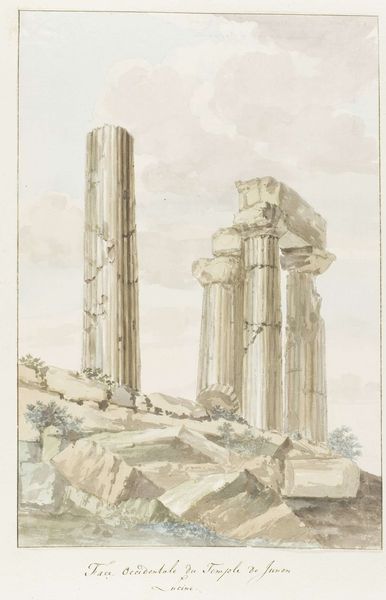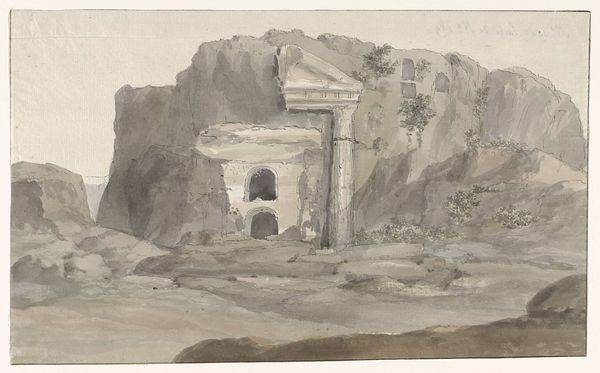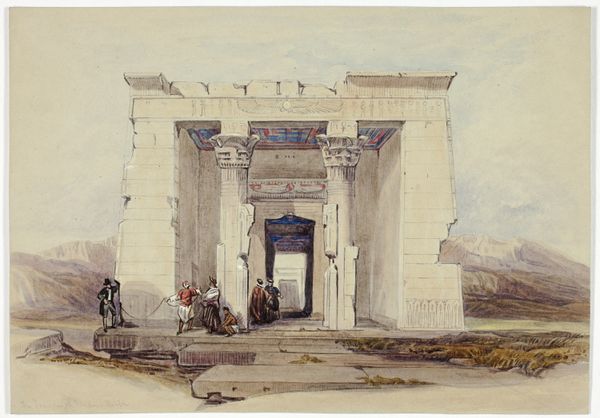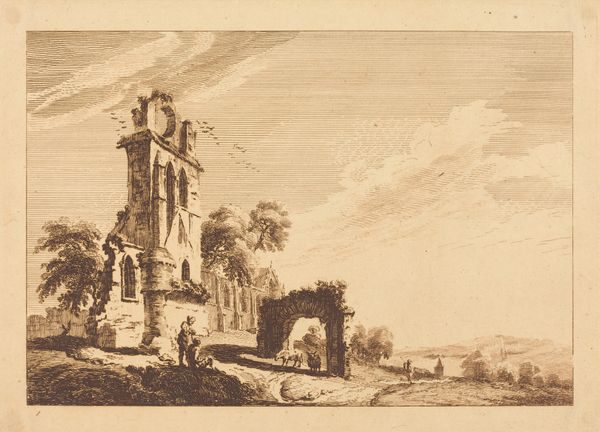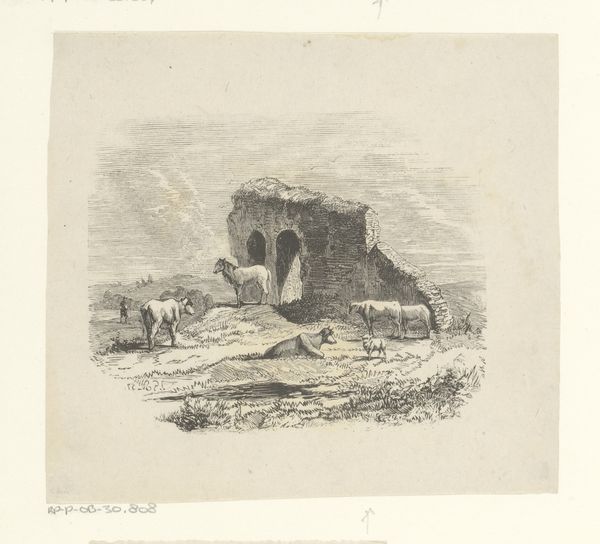![Temple of Wady Kardassy [Qirtâsî] in Nubia. by David Roberts](/_next/image?url=https%3A%2F%2Fd2w8kbdekdi1gv.cloudfront.net%2FeyJidWNrZXQiOiAiYXJ0ZXJhLWltYWdlcy1idWNrZXQiLCAia2V5IjogImFydHdvcmtzLzUwOTg2ZjM5LTUwZGQtNGEwMC05MWQzLWE0MGIwMmZkMjU3MS81MDk4NmYzOS01MGRkLTRhMDAtOTFkMy1hNDBiMDJmZDI1NzFfZnVsbC5qcGciLCAiZWRpdHMiOiB7InJlc2l6ZSI6IHsid2lkdGgiOiAxOTIwLCAiaGVpZ2h0IjogMTkyMCwgImZpdCI6ICJpbnNpZGUifX19&w=1920&q=75)
tempera, watercolor
#
tempera
#
pencil sketch
#
landscape
#
ancient-egyptian-art
#
perspective
#
charcoal drawing
#
watercolor
#
ancient-mediterranean
#
romanticism
#
watercolour illustration
#
miniature
#
watercolor
Copyright: Public Domain: Artvee
Curator: Here we have David Roberts’ "Temple of Wady Kardassy in Nubia," created between 1846 and 1849, a watercolour and tempera study showcasing ancient Egyptian architecture. It’s quite striking, don't you think? Editor: Absolutely. My immediate impression is one of quiet desolation. The subdued palette, the weathered stone – it evokes a profound sense of history, and perhaps of loss. Curator: Roberts, of course, was deeply invested in documenting the archaeological sites of the Near East and Egypt during a period of intense colonial interest. This piece reflects both his Romantic sensibility and the broader orientalist discourse of the 19th century, with its inherent power dynamics. Editor: True, but look at how Roberts handles light and shadow; the strategic placement of the temple ruins allows the light to delineate form with impressive clarity, guiding our eye through the decaying structure and suggesting a sublime monumentality even in ruin. Curator: Roberts certainly contributed to a vision of Egypt that was both picturesque and easily consumed by European audiences. The presence of figures dwarfed by the scale of the ruins emphasizes the power of ancient civilizations but also underlines European exploration and supposed 'discovery.' Editor: Those diminutive figures are crucial. They provide a sense of scale, emphasizing the immensity and intricacy of the Temple. But beyond that, notice how the verticality of the columns is offset by the horizontality of the landscape—a classic Romantic technique creating both harmony and tension. Curator: It is worth reflecting how, through his widely disseminated images, Roberts’ work shaped popular perceptions of Egypt, influencing everything from travel to political agendas. We need to view this piece within that broader historical context of imperial expansion and cultural appropriation. Editor: Agreed. And while acknowledging that crucial context, we can still admire how Roberts manipulates the washes of watercolor to render such a realistic impression of the play of light on the aged stone, a tangible sense of texture despite the medium's inherent delicacy. Curator: Precisely. The image, therefore, stands as a complex historical document reflecting artistic skill but also representing an entangled cultural perspective. Editor: A compelling synthesis then – revealing a meticulous observation rendered through an aesthetically potent composition – a small watercolour speaking volumes about history, artistry, and perception.
Comments
No comments
Be the first to comment and join the conversation on the ultimate creative platform.
